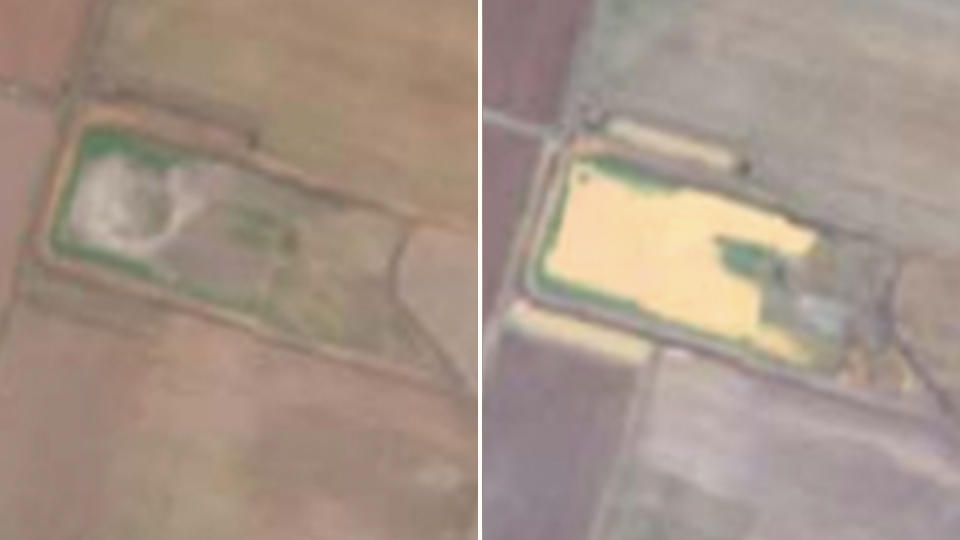Why alarming images of drought-affected areas are causing controversy
Routine satellite images of dams in drought-affected areas have caused controversy, with some slamming the Murray-Darling Basin Authority for releasing them in the first place.
On Friday, the Murray-Darling Basin Authority released a report which monitored first-flush flows in Namoi, Macquarie and Warrego catchments.
"The MDBA used satellite tracking to monitor the water's progress and irrigator compliance with NSW Government embargoes, which were imposed to protect these important flows from extraction between 1 April and 7 May," Murray Darling Basin Authority Chief Executive Phillip Glyde said in a statement.
"The embargoes were put in place a short time after the flows began, to enable this ‘first flush' to reach as far down the two rivers as possible after a long dry spell. The first flush was of critical importance to the rivers' ecological health and to downstream communities struggling with the drought.”

The report also showed satellite images of dams on private properties, and the before and after shots reveal some of the dams were mysteriously full when the catchment areas had pumping bans in place.
According to the report, across the Namoi, 29 private dams appear to have been filled by at least 10 per cent during the flow embargo and across the Macquarie, an additional three “significantly sized storages” filled up by at least 10 per cent during the embargo.
"In the Namoi, the MDBA found that 29 private storages appeared to fill or partially fill during the embargo. In the Macquarie, another three private storages were found to fill during the embargo,” Mr Glyde said in a statement.
“There are many reasons why a farm dam could have filled quite legally which is why it is important for follow up work to be done on the ground by state compliance officers."
The Murray-Darling Basin Authority have now referred their findings to the regulating body. However, the Murray-Darling `Basin Authority have insisted how the water appeared in the water systems could not determined, or if the method was legal.
“It is not possible to tell from satellite imagery whether the capture of water was illegal, there are many reasons why a water storage could have filled which is why it is important for on-ground follow up work for compliance purposes,” the report says.
However not everyone believes publishing the report was the most responsible thing to do.

Steve Whan, head of the National Irrigators Council, said it would have been “fairer” if the Murray-Darling Basin Authority handed the report over to the regulator for investigation, instead of making it public.
Mr Whan explained given the seriousness of the drought in the catchment areas, people would automatically assume wrongdoing on the owner’s behalf.
“And that, I think, is unfair and disappointing,” Mr Whan told ABC Radio.
“One of the sites they've identified for further investigation is the Warren Racecourse, another is an irrigator property that had general security water and groundwater available at the time, and another is a property potentially owned by the Commonwealth government.”
Speaking to ABC Radio, Jon-Maree Baker, the Executive Officer of Namoi Water said she is worried about people’s mental health following the images being made public.
She noted farmers in the catchment have not had an allocation for almost three years.
“So I'm very concerned that people's mental health, in seeing an image of their farm dam in a report being used out of context, absolutely puts them at risk of feeling very overwhelmed and vulnerable,” she said.
Do you have a story tip? Email: newsroomau@yahoonews.com.
You can also follow us on Facebook and Twitter, download the Yahoo News app from the App Store or Google Play and stay up to date with the latest news with Yahoo’s daily newsletter. Sign up here.

